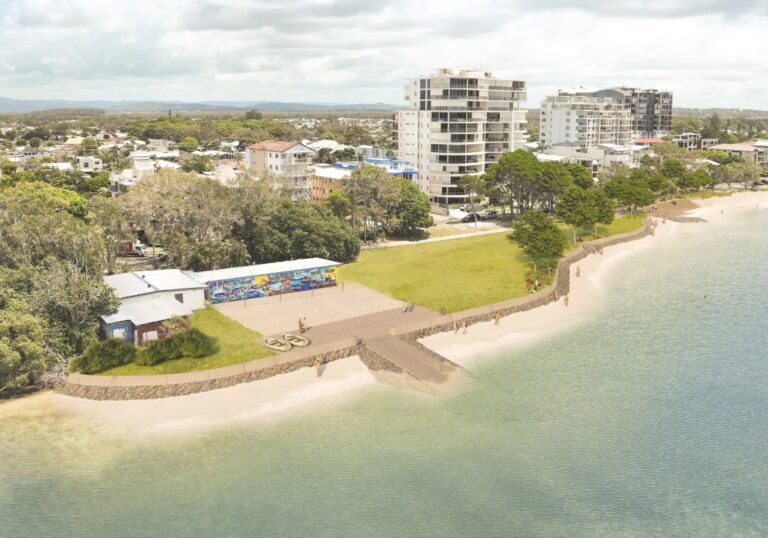Queensland: Strengthening coastal defenses and building resilient communities – Dredging Today

Queensland Government Funds Transformative Coastal Projects to Enhance Community Resilience
Introduction
The Queensland Government has announced vital funding for over a dozen transformative coastal projects aimed at protecting communities and addressing emerging shoreline threats. These initiatives align with the United Nations Sustainable Development Goals (SDGs), particularly SDG 13 (Climate Action), SDG 11 (Sustainable Cities and Communities), and SDG 14 (Life Below Water).
Funding Overview
The QCoast2100 program is jointly funded by the Queensland and Australian Governments under the Disaster Recovery Funding Arrangements (DRFA). This funding forms part of more than $152 million allocated through the Efficiencies Funding Program 2023-24, which supports priority disaster resilience and mitigation projects across Queensland.
- Fifteen key projects managed by twelve local governments will share $5.11 million in funding.
- The funding aims to:
- Support coastal hazard resilience projects
- Bolster coastal defenses
- Address emerging risks faced by coastal communities
Key Project Highlight
One of the significant projects receiving funding is the Sunshine Coast Council’s Diamond Head seawall at Golden Beach. This project focuses on protecting the community from the rapidly developing tidal breakthrough on Bribie Island through the construction of a 500-metre seawall, directly contributing to SDG 13 by enhancing climate resilience.
Government Statements and SDG Alignment
Federal Minister for Emergency Management, Kristy McBain, emphasized the importance of this funding in enabling local governments to implement practical solutions that protect vulnerable coastal areas now and in the future.
“This is about making sure local governments have the tools they need to plan, prepare and respond to the real impacts communities are already seeing along our coastlines.”
“We’re working closely with state and local governments to boost coastal resilience and support long term adaptation to climate change.”
“These are smart, targeted investments that will help safeguard lives, properties and critical infrastructure from worsening coastal hazards.”
Minister for the Environment and Tourism, Andrew Powell, also highlighted that the QCoast2100 program supports local governments in mitigating risks such as:
- Sea erosion
- Storm tide inundation
- Sea level rises linked to climate change
These efforts contribute directly to achieving SDG 11 by making communities safer and more sustainable, and SDG 13 by addressing climate-related hazards.
Conclusion
The Queensland Government’s investment through the QCoast2100 program represents a strategic commitment to sustainable development and climate resilience. By funding critical coastal projects, the program supports the protection of vulnerable communities, infrastructure, and ecosystems, aligning with global efforts to meet the Sustainable Development Goals.

1. Sustainable Development Goals (SDGs) Addressed or Connected
- SDG 13: Climate Action
- The article discusses efforts to boost coastal resilience and support long-term adaptation to climate change, directly linking to SDG 13.
- SDG 11: Sustainable Cities and Communities
- Protecting coastal communities from hazards such as tidal breakthroughs and storm tide inundation aligns with making cities and human settlements inclusive, safe, resilient, and sustainable.
- SDG 14: Life Below Water
- Coastal hazard resilience and mitigation projects help protect marine and coastal ecosystems, relevant to SDG 14.
- SDG 9: Industry, Innovation, and Infrastructure
- Construction of infrastructure like seawalls to protect communities reflects building resilient infrastructure.
2. Specific Targets Under Those SDGs Identified
- SDG 13: Climate Action
- Target 13.1: Strengthen resilience and adaptive capacity to climate-related hazards and natural disasters in all countries.
- Target 13.3: Improve education, awareness-raising and human and institutional capacity on climate change mitigation, adaptation, impact reduction, and early warning.
- SDG 11: Sustainable Cities and Communities
- Target 11.5: Significantly reduce the number of deaths and the number of people affected by disasters, including water-related disasters.
- Target 11.B: Increase the number of cities and human settlements adopting and implementing integrated policies and plans towards inclusion, resource efficiency, mitigation and adaptation to climate change.
- SDG 14: Life Below Water
- Target 14.2: Sustainably manage and protect marine and coastal ecosystems to avoid significant adverse impacts.
- SDG 9: Industry, Innovation, and Infrastructure
- Target 9.1: Develop quality, reliable, sustainable and resilient infrastructure.
3. Indicators Mentioned or Implied to Measure Progress
- Number and scale of coastal resilience projects funded and implemented
- The article mentions funding of $5.11 million for 15 key projects managed by 12 local governments, which can serve as an indicator of investment and action.
- Reduction in vulnerability and risk to coastal hazards
- Indicators could include measurements of reduced damage or risk from tidal breakthroughs, sea erosion, storm tide inundation, and sea level rise impacts.
- Infrastructure development and effectiveness
- Progress can be measured by completion and performance of infrastructure like the 500-metre Diamond Head seawall at Golden Beach.
- Community preparedness and adaptive capacity
- Indicators related to local governments’ ability to plan, prepare, and respond to coastal hazards, reflecting Target 13.3 and 11.B.
4. Table of SDGs, Targets, and Indicators
| SDGs | Targets | Indicators |
|---|---|---|
| SDG 13: Climate Action |
|
|
| SDG 11: Sustainable Cities and Communities |
|
|
| SDG 14: Life Below Water |
|
|
| SDG 9: Industry, Innovation, and Infrastructure |
|
|
Source: dredgingtoday.com








